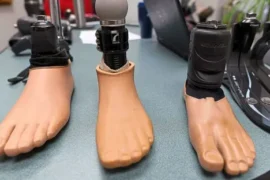Introduction
In the evolving landscape of medical technology, polymers have emerged as a vital component in the development and improvement of medical implants. Their versatility, biocompatibility, and adaptability make them suitable for a wide range of applications, from joint replacements to heart valves. However, despite their significant advantages, the use of polymers in medical implants also presents several challenges. This post explores these challenges and examines how polymers are reshaping the future of medical implants.
Polymers have revolutionized many aspects of modern medicine, offering solutions that were previously unimaginable. Their application in medical implants has brought about significant advancements, improving patient outcomes and enhancing the quality of life for many individuals. However, the path to integrating polymers into medical implants is fraught with challenges that must be addressed to ensure their efficacy and safety. This post delves into these challenges and highlights the transformative potential of polymers in the future of medical implants.

The Challenges of Using Polymers in Medical Implants
1. Biocompatibility and Immune Response
One of the primary challenges in using polymers for medical implants is ensuring biocompatibility. Polymers must be compatible with the human body to avoid adverse reactions. The immune system can sometimes recognize the polymer as a foreign material, leading to inflammation or rejection. This response can compromise the implant’s functionality and longevity.
To address this, researchers are continuously developing new polymer formulations and surface modifications that minimize immune responses. Innovations such as hydrogels and bioactive coatings are being explored to enhance the biocompatibility of polymer-based implants. These advancements aim to create a harmonious interaction between the implant and the body’s biological environment.
2. Mechanical Properties and Durability
Medical implants must withstand the mechanical stresses and strains of the human body over long periods. Polymers, while versatile, often face challenges in achieving the necessary mechanical strength and durability. For instance, polymers used in load-bearing implants, such as orthopedic devices, need to replicate the strength of natural bone while maintaining flexibility.
Researchers are working on enhancing the mechanical properties of polymers through composite materials and advanced manufacturing techniques. By combining polymers with other materials like ceramics or metals, it is possible to create implants that possess the required strength and durability. Additionally, advancements in 3D printing are allowing for the precise fabrication of complex structures that meet specific mechanical requirements.
3. Degradation and Longevity
The longevity of medical implants is a critical factor in their success. Polymers can degrade over time due to chemical reactions within the body, such as hydrolysis or enzymatic activity. This degradation can lead to a loss of structural integrity and, ultimately, implant failure.
To mitigate this issue, researchers are developing polymers with controlled degradation rates and improved stability. Biodegradable polymers are designed to degrade at a predictable rate, allowing for the gradual replacement of the implant with natural tissue. Non-biodegradable polymers, on the other hand, are engineered to resist degradation and maintain their functionality for extended periods.
4. Infection Risk
Infections pose a significant risk to patients with medical implants. Polymers can provide a surface for bacterial colonization, leading to biofilm formation and persistent infections. These infections are challenging to treat and can necessitate the removal of the implant.
To combat this, antimicrobial coatings and drug-delivery systems are being integrated into polymer-based implants. These innovations aim to prevent bacterial attachment and release antimicrobial agents to eliminate any potential infections. The development of such technologies is crucial in ensuring the safety and success of polymer-based medical implants.
How Polymers Reshape the Future of Medical Implants
1. Personalized Implants Through 3D Printing
3D printing technology is revolutionizing the field of medical implants, and polymers are at the forefront of this transformation. The ability to create personalized implants tailored to an individual’s anatomy is a game-changer. Polymers used in 3D printing can be customized in terms of shape, size, and mechanical properties, allowing for a perfect fit and improved patient outcomes.
This personalization extends beyond just physical dimensions. Researchers are exploring the use of bioactive polymers that can promote tissue integration and healing. By incorporating growth factors or stem cells into the polymer matrix, it is possible to create implants that not only replace damaged tissue but also actively contribute to the body’s natural healing processes.
2. Smart Implants with Advanced Functions
The future of medical implants is moving towards smart implants that can monitor and respond to the body’s needs. Polymers play a crucial role in this evolution by providing the flexibility and versatility needed for integrating sensors and electronic components into the implants. These smart implants can monitor parameters such as pressure, temperature, and biochemical markers, providing real-time data to healthcare providers.
Furthermore, smart implants can be designed to release drugs or therapeutic agents in response to specific triggers. For instance, a polymer-based implant could release antibiotics in response to an infection or anti-inflammatory drugs in response to tissue inflammation. These advanced functions hold the promise of improving patient care and reducing the need for additional medical interventions.
3. Enhanced Biocompatibility and Tissue Integration
Advancements in polymer science are leading to the development of materials with enhanced biocompatibility and tissue integration properties. Surface modifications, such as the incorporation of bioactive molecules or nanostructures, can promote cell attachment and proliferation. This enhances the integration of the implant with the surrounding tissue, reducing the risk of rejection and improving long-term outcomes.
Additionally, researchers are exploring the use of biodegradable polymers that can gradually be replaced by natural tissue. These polymers degrade at a controlled rate, allowing the body to replace the implant with its own tissue over time. This approach not only reduces the need for permanent implants but also minimizes the risk of long-term complications.
4. Cost-Effectiveness and Accessibility
The use of polymers in medical implants also offers significant advantages in terms of cost-effectiveness and accessibility. Polymers are generally more affordable than metals or ceramics, making them a viable option for a wider range of patients. The ability to manufacture implants using 3D printing further reduces costs by eliminating the need for complex and expensive manufacturing processes.
Moreover, the versatility of polymers allows for the creation of implants that can be used in resource-limited settings. This is particularly important in developing countries where access to advanced medical technologies may be limited. Polymer-based implants can provide effective and affordable solutions, improving healthcare outcomes for underserved populations.
Conclusion
The challenges associated with using polymers in medical implants are significant, but they are not insurmountable. Through continuous research and innovation, scientists and engineers are developing new materials and techniques to address these challenges and unlock the full potential of polymers in medical implants. The future of medical implants is bright, with polymers playing a central role in creating personalized, smart, and biocompatible solutions that improve patient outcomes and enhance the quality of life.
As we continue to explore the possibilities of polymers in medical implants, it is essential to stay informed about the latest advancements and engage in discussions about their implications. We invite you to share your thoughts and experiences in the comments section below. Your insights and perspectives are valuable in shaping the future of this exciting field.





